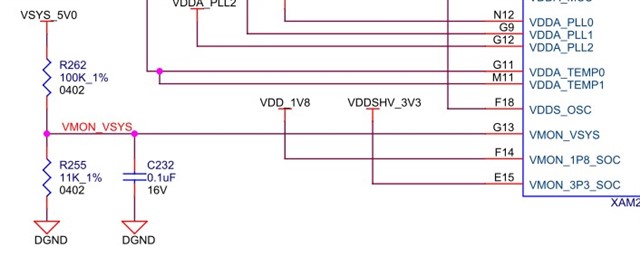Hi Champ,
I am asking for my customer. Sorry for that I don't know much about Arm-based MCU.
Customer's current design follows our EVM board with the pin VMON_VSYS in below screenshot.

I would like to ask the function and specification of this pin (VMON_VSYS) can be explained more clearly and easily. Though we have read the specification, still don't quite understand the purpose of this function. Would you elaborate more in details please ?
Also, the voltage level measured on VMON_VSYS is about 490mV from customer's design. Is it well-designed to meet the spec. ?
Thanks for any reply.
Best regard.

